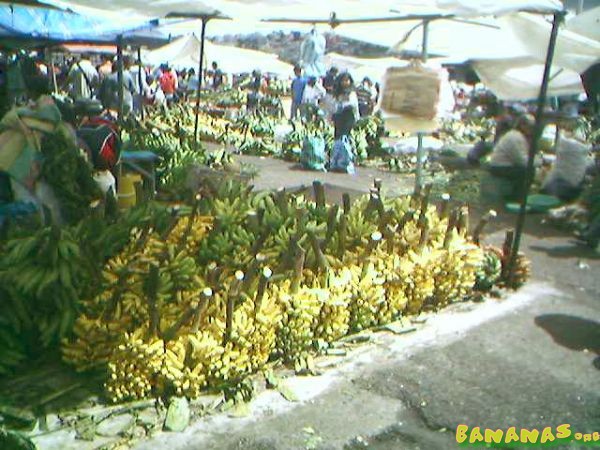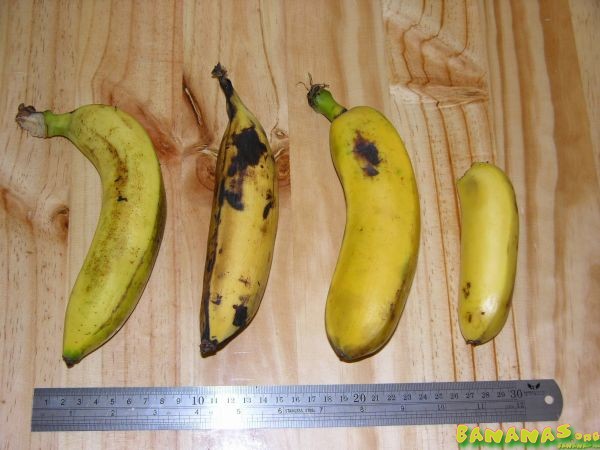As far as I know, guys, 'Orito' is a regional term for these bananas. Gabe has kindly identified them as belonging to the Sucrier group of fruits. This is a 2.5-3 meter tall plant with narrower green leaves and a nearly black pseudostem; the fruits are borne in heavy racemes of about 20 hands of about 15-20 fingers each (on a healthy plant), and weigh in at about 15-20 kg - I've never actually weighed a bunch of Oritos, but I do know how much I can deadlift with one arm, so the large racemes of this fruit that I've harvested and purchased were not more than 20kg.
From what I've been able to glean, 'Orito' is a South American cultivar developed for its small, firm, sweet fruits. They're grown anywhere that will hold the plants - this means that I can always find the fruit in markets no matter whether I'm on the coast or in the Amazon (unlike the GM variants, which are only grown on the coast.) I suspect that Oritos are very similar to Ninos and possibly also Ladyfingers, but nobody has been able to confirm this since I'm the only one eating them.
The common name 'Oritos' and the Brazilian name 'Ouros' both refer to the colour of the skins and flesh. 'Oritos' means 'little golden ones' and 'Ouros' means 'golden ones.'
Plant, at Union Base, Pastaza

Bunches, for sale at the large Free Market, Quito, Pichincha, with Giant Plantains in the background for comparison.

A bunch, on my table in Quito, Pichincha

A hand, on my counter in Loja, Loja, with Rosados and Sedas for comparison.

A finger, compared to other more typical bananas - Seda, Limon, GM, and finally Orito.

Slices, in my fruit salad. The big pink slices are improved Gros Michel, and the smaller gold slices are Orito.
